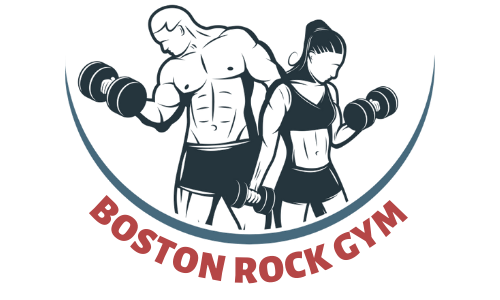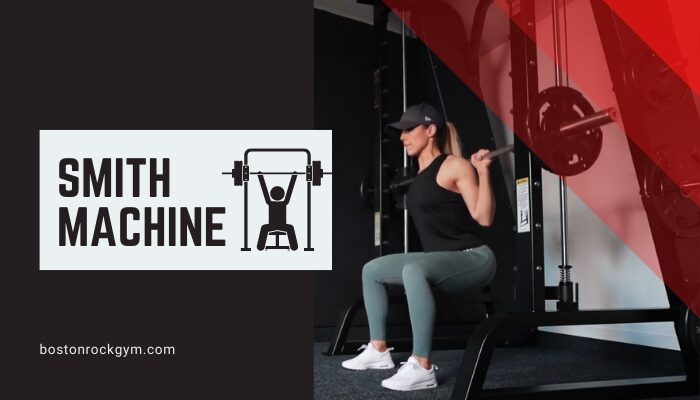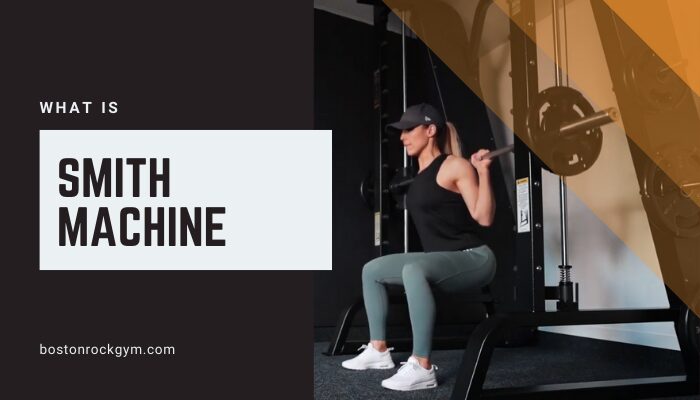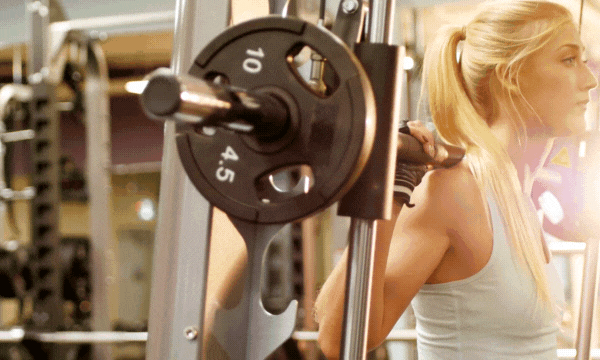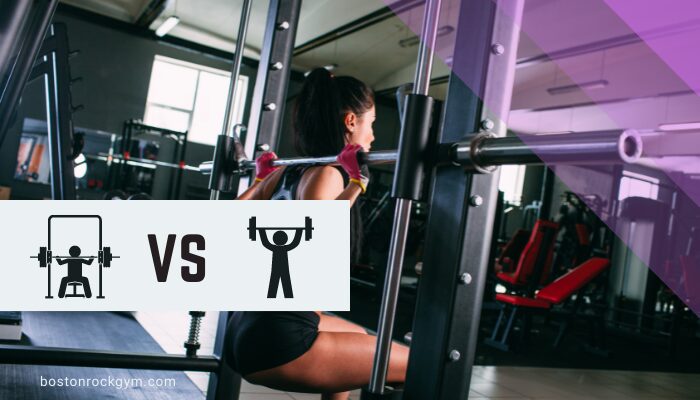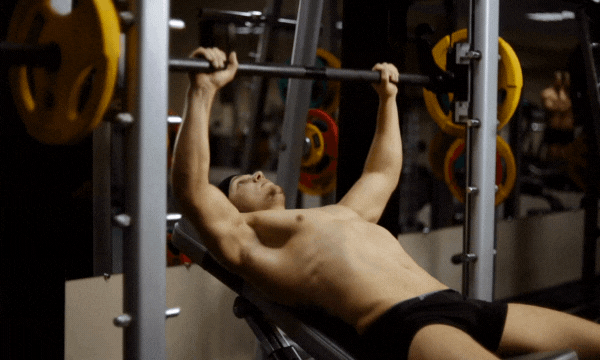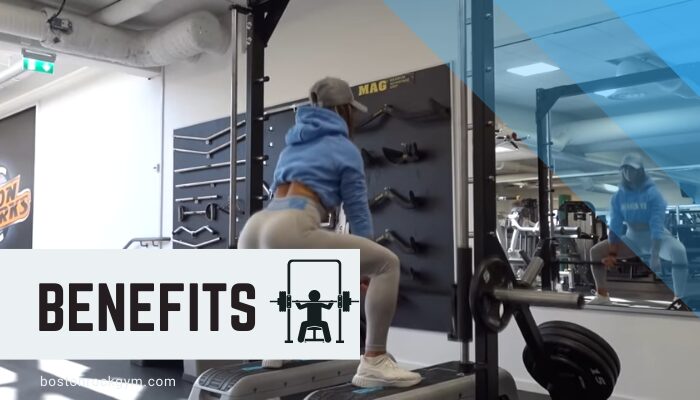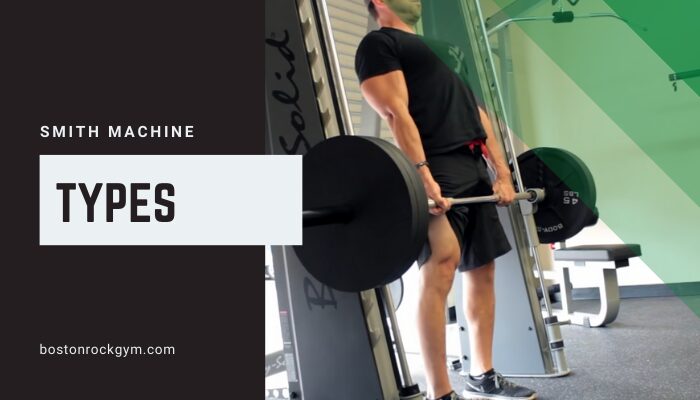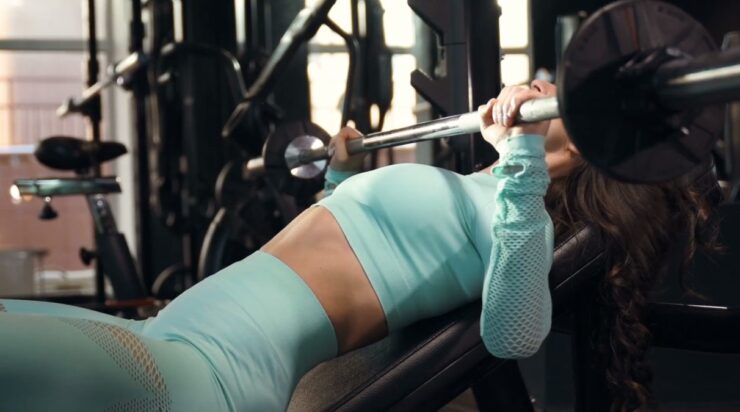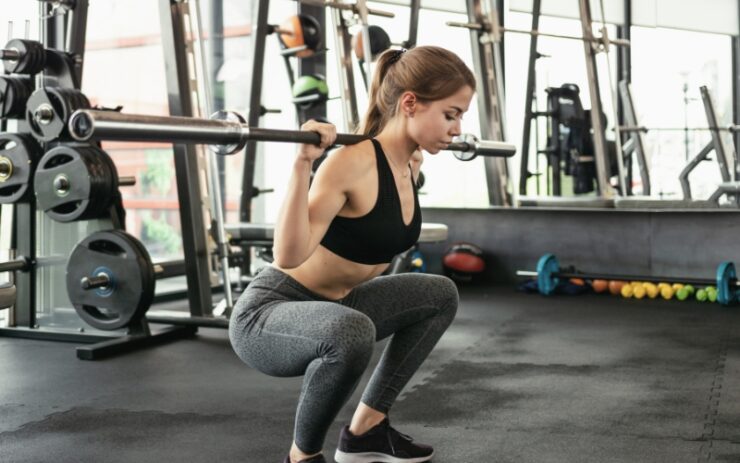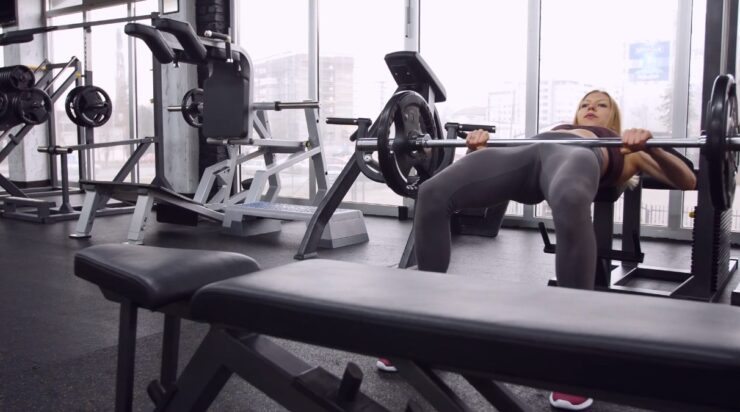The Smith Machine – a familiar sight in any gym, often commandeered by someone engrossed in a 30-minute hip thrust session or a relentless pursuit of calf raises, hoping to sculpt their lower legs. Yet, this versatile apparatus offers a multitude of other uses.
Opinions on the Smith Machine tend to be polarized. Some gym-goers will advise you to stick to free weights, while others swear by the safety and convenience of this machine, performing all their major lifts within its sturdy frame. The truth, as is often the case, lies somewhere in between.
With the global surge in gym training, it’s crucial to understand how to maximize the use of equipment and tailor your workout routines to align with your personal fitness goals.
A fundamental aspect of any exercise regimen is knowing the weight you’re lifting. So, whether you’re a fan or a critic of the Smith Machine, or you’re just curious, you’ve probably found yourself pondering over one question – ‘How much does the bar on a Smith Machine weigh?’
We will not only answer this question but also explore the various exercises you can perform on the Smith Machine and how these variations can target different muscle groups compared to their free weight counterparts. So, let’s dive in and demystify the Smith Machine.
Contents
What is a Smith machine?
The Smith Machine is a quintessential piece of gym equipment, designed with the primary purpose of ensuring safety while allowing for a wide range of weightlifting exercises. At first glance, it might appear as a simple steel bar with robust rollers, but it’s much more than that.
The bar of the Smith Machine is indeed a sturdy steel construct, equipped with rollers that glide smoothly along a fixed vertical track. These rollers play a crucial role in facilitating the bar’s movement, ensuring it follows a predetermined path.
The Smith Machine also boasts a solid base, typically made of heavy-duty metal, providing stability and support. This base is often equipped with adjustable safety stops, allowing users to set a limit on how low the bar can go.
Interlocked along the vertical rails of the machine, you’ll find a series of iron barbells. The barbells can be locked in place at any point along the rails, allowing for a variety of exercises at different heights and angles.
In essence, the Smith Machine is a comprehensive, all-in-one weightlifting station. Its design allows for controlled, safe movements, making it an excellent choice for both novice and experienced lifters.
What is the Weight of a Smith Machine Bar?
The essence of any workout is understanding the weight moved. While free weights are easy enough to understand, machines are not always so simple.
The answer to this question as pertains to the smith machine, is dependant on the make and model of the machine you have access to. It can be quite variable but generally speaking, its between 15 – 20 lbs.
The bar itself in the machine is typically a standard Olympic Barbell (e.g. 45 lbs). However, once attached to the sliding track mechanism, some of the weight is offset.
Constructing A Smith Machine
Solid metal sheet
The foundation of a Smith Machine is a solid metal sheet. This serves as the base of the machine, providing stability and durability. The interlocked metal sheet is polished to a fine finish, ensuring it can withstand the rigors of regular use.
Weight Bar
The weight bar is a significant component of the Smith Machine, accounting for a large portion of the machine’s total weight. It serves as the central deck of the entire setup, where weights are added and removed according to the user’s needs.
Quality clamps
Quality clamps are essential in the construction of a Smith Machine. These clamps secure the weight bar and the metal sheet together, ensuring the various parts of the machine are firmly held in place. This prevents any potential breakage or accidents during use.
Metallic bearings and rollers
The smooth operation of the Smith Machine is facilitated by metallic bearings and rollers. These components allow the weight bar to glide effortlessly along the machine’s track, reducing friction and making the machine easier to use.
Metallic rails
Metallic rails play a crucial role in the Smith Machine’s construction. They provide additional support, enhancing the machine’s flexibility and durability. Without these rails, the machine could be prone to accidents, especially with prolonged use.
Safety Catchers
Safety catchers are an integral part of the Smith Machine. Often padded for extra protection, they hold the weight bar securely when not in use. This not only protects the user from potential accidents but also extends the lifespan of the machine by preventing unnecessary wear and tear.
Smith Machine Bar vs a Free-Weight Barbell
When it comes to weightlifting, two common options are the Smith Machine and free-weight barbells. Each has its unique features and benefits, and understanding these can help you make an informed decision about which is best for your fitness goals.
The difference in weight
A Smith Machine bar weighs between 15 to 20 pounds
An Olympic free-weight barbell weighs 45 pounds
The free-weight barbell will have a heavier max weight, which allows for a greater possible progression.
Safety approach
The smith machine beats free weights here, particularly when doing heavy, solo training.
While free-weight barbells offer a potent and versatile workout tool, they require a high degree of control and proper form to ensure safety. Without these, the risk of injury, such as dropping the weight or straining a muscle due to improper form, increases. That’s where your gym buddy comes in handy, spotting you during those grueling, heavy lifts.
But the Smith Machine? It’s like your personal spotter, always there, always reliable. The bar is attached to a fixed track, which guides the movement and prevents the bar from falling or moving unpredictably.
And let’s not forget the Smith Machine’s secret weapons: safety clamps and catchers. These components can be adjusted to stop the bar at a certain height, preventing it from falling too low. Especially useful for exercises like squats or bench presses, where a failed rep could potentially lead to the bar falling on the user. By setting the safety catchers at the appropriate height, you can ensure that the bar will be caught if you lose control, significantly reducing the risk of injury.
Movement
Operating on a fixed track, allowing for vertical, linear motion. This means your movements are guided, which can be beneficial for maintaining proper form and focusing on specific muscle groups. However, this also means your range of motion is limited to up and down movements.
On the flip side, free-weight barbells offer a vast range of motion. You’re not just limited to upward and downward movements; you can move sideways, rotate, and even perform complex multi-joint movements. This freedom of movement can engage more muscle groups and mimic real-world motions, making your workouts more functional.
Fitness Therapy
When it comes to fitness therapy, both have their merits. Free-weight barbells are highly effective for compound muscle building and activation. However, the Smith Machine bar, with its guided movements, can provide a more controlled environment for targeted muscle activation.
Easy operation
The Smith Machine is generally more user-friendly, especially for those new to weightlifting. Its guided movements and safety features make it easy to handle and use, requiring less skill and expertise.
In contrast, free-weight barbells require more skill, knowledge, and even energy. Proper form and control are crucial when using free-weight barbells to prevent injury and ensure an effective workout.
A combination of training form with free weights, while going heavier with smith machines is common, to get the best of both worlds.
Types of Smith Machine
These machines come in various forms, each with unique features designed to cater to different workout needs. Here’s a breakdown of some common types:
Residential Smith Machine
The Residential Smith Machine is a high-end, durable piece of equipment often found in home gyms. It features sturdy gliders and adjustable bearings that facilitate smooth upward and downward movements.
Particularly effective for leg workouts and includes attachments for squats and relaxation. The weight of the steel bar in a Residential Smith Machine is typically around 20 pounds.
All-In-One Smith Machine
The All-in-One Smith Machine is a versatile piece of equipment with numerous attachments for a variety of exercises, including squats and leg workouts.
It features solid rollers and a foam-coated seat for comfort during exercise. However, due to its versatility, the installation of this machine can be quite complex.
Counterbalance Smith Machine
The Counterbalance Smith Machine is designed to offset the weight of the steel bar, reducing its effective weight. It includes a pulley, bearing glides, and rods, all of which contribute to muscle building and balance between small and large muscle groups.
After counterbalancing, the weight of the bar is typically around 20 pounds, compared to the original 40 pounds.
3D Smith Machine
The 3D Smith Machine is unique in that it allows for both vertical and horizontal movements simultaneously.
It includes bearings, solid clamps, and a rotor, maintaining a stable weight of about 20 pounds. Due to its unique properties, it is often used in tournaments and events.
Commercial Smith Machine
The Commercial Smith Machine is a heavy-duty machine often used by professional athletes and weightlifters.
Featuring a free sleeve and girdle that allow for rotational movement of the steel bar. Its solid tubing and comfortable seat provide high stability, making it ideal for intense workouts.
Angled smith machine
Similar to the Linear Smith Machine, the Angled Smith Machine is inclined, often at about 10 degrees. It includes bearings that make this rotation comfortable, along with clamps, benches, and a press for rotational exercises.
Linear ball bearing smith machine
This machine operates in a straight, linear motion. Its linear bearings and sleeves move up and down, and it includes attachments such as steel clamps and moving plates.
Like the Angled Smith Machine, it also features a solid foam-coated seat for workouts. The primary difference is that its movement is strictly linear.
Exercises Smith Machine Bar
Before we dive into these exercises, let’s clear the air: the Smith Machine is not a doppelgänger for free weights.
- Its fixed path means fewer stabilizer muscles are called to the party, which can limit overall muscle development and functional strength.
- However, for beginners, those on the mend from an injury, or anyone looking to isolate target muscles with laser-like precision, the Smith Machine can be a valuable ally.
Think of it as a sidekick to your free-weight training, not a stand-in.
Bench press
First up, we have the bench press, often hailed as the undisputed king of chest exercises. It’s like the lion of the weightlifting jungle, majestic and powerful.
The classic version of this exercise is performed on a flat bench, with the barbell acting as your scepter. As you lower the bar to your chest in a controlled manner, you then push it back up until your arms are fully extended, engaging your chest muscles throughout.
Variations of the bench press, including incline and decline versions, target different areas of the chest, like a royal decree for your muscles.
The Smith Machine bench press, on the other hand, is like having a royal guard, providing stability and allowing you to focus more on pushing the weight rather than balancing it.
Bent over row
Next, we have the bent-over row, the sovereign of back exercises. Its reign over the kingdom of back development is undisputed, with loyal subjects including the latissimus dorsi, rhomboids, and trapezius muscles.
The classic version of the exercise involves standing with your feet shoulder-width apart, bending at the waist while keeping your back straight, and holding a barbell with an overhand grip. You then pull the barbell towards your abdomen, squeezing your shoulder blades together at the top of the movement, before lowering the weight in a controlled manner.
The Smith Machine bent-over row is a variation that offers its own unique advantages. The fixed path of the Smith Machine provides stability, allowing you to focus more on pulling the weight rather than balancing it.
Squats
The squat, the monarch of all lower body exercises, holds court in any robust strength training program. Its royal court includes the quadriceps, hamstrings, and glutes.
The classic version of the exercise involves standing with your feet shoulder-width apart, holding a barbell across your upper back. You then lower your body by bending at the knees and hips, keeping your chest up and your back straight, until your thighs are parallel to the floor. Pushing through your heels, you return to the starting position, engaging your lower body muscles throughout the movement.
Variations of the squat can target different areas of the lower body. For instance, the sumo squat, with a wider stance and the toes pointed out, places more emphasis on the inner thighs and glutes. On the other hand, the front squat, where the barbell is held in front of the body, targets the quadriceps more intensely.
The Smith Machine squat is a variation that offers its own unique advantages. The fixed path of the Smith Machine provides stability, allowing you to focus more on the squatting motion rather than balancing the weight.
Hip-Thrusts
The hip thrusts are a popular choice for anyone looking to sculpt a strong and shapely posterior. It is unrivaled ability to target the gluteus maximus, the body’s largest muscle, while also working the hamstrings and core.
The classic version of the exercise involves sitting on the ground with a barbell across your hips and your back against a bench. You then push through your heels to lift your hips, squeezing your glutes at the top of the movement, before lowering your hips back to the ground in a controlled manner.
Variations of the hip thrust can target different areas of the lower body. For instance, the single-leg hip thrust, where one foot is raised off the ground, can increase the intensity and challenge your balance.
The Smith Machine hip thrust is a variation that offers its own unique advantages. The fixed path of the Smith Machine provides stability, allowing you to focus more on the hip thrusting motion rather than balancing the weight.
Calf Raises
Calf raises, the unsung heroes of lower body exercises, target the gastrocnemius and soleus muscles, the unsung heroes of activities like running, jumping, and even walking.
The classic version of the exercise involves standing upright with a barbell across your upper back, then raising your body upward by pushing down on the balls of both feet and contracting your calf muscles. You then lower your body back down until your calves are stretched, and your heels are just off the ground.
Variations of the calf raise can target different areas of the calf muscles. For instance, the seated calf raise, which involves sitting with weights on your knees, places more emphasis on the soleus muscle. On the other hand, single-leg calf raises can increase the intensity and challenge your balance.
The Smith Machine calf raise is a variation that offers its own unique advantages. The fixed path of the Smith Machine provides stability, allowing you to focus more on the calf raising motion rather than balancing the weight.
Deadlifts
Last but certainly not least, the deadlift, is the titan of total-body exercises, and a fundamental component of any training regimen. Its unrivaled ability to engage a multitude of muscle groups, including the hamstrings, glutes, back, and core, all in one powerful movement.
It’s a Hercules of a move, engaging a multitude of muscle groups, including the hamstrings, glutes, back, and core, all in one powerful movement. The classic version of the exercise involves standing with your feet hip-width apart, bending at the hips and knees to grip a barbell with an overhand or mixed grip. You then lift the barbell by straightening your hips and knees, keeping your chest up and your back straight. The movement is completed by lowering the barbell back to the ground in a controlled manner.
Variations of the deadlift can target different muscle groups and challenge your body in new ways. For instance, the sumo deadlift, with a wider stance and the hands inside the knees, places more emphasis on the glutes and hamstrings. On the other hand, the stiff-legged or Romanian deadlift targets the hamstrings more intensely.
The Smith Machine deadlift is a variation that offers its own unique advantages. The fixed path of the Smith Machine provides stability, allowing you to focus more on the lifting motion rather than balancing the weight.
Conclusion
In the grand gymnasium of fitness, the Smith Machine stands as a steadfast knight, offering a safe and controlled environment for both novice lifters and seasoned veterans. Its versatility is its banner, allowing for a multitude of exercises that can target every muscle group in the body.
Yet, it does not seek to usurp the throne of free weights. Instead, it serves as a loyal vassal, complementing free-weight training and providing a unique approach to weightlifting.
Whether you’re a fan or a critic, one cannot deny the Smith Machine’s contributions to the realm of fitness. From its sturdy steel construct to its adjustable safety stops, it is a testament to the evolution of gym equipment.
So, the next time you find yourself in the gym, give the Smith Machine a try. You might just find a new ally in your quest for fitness.

Working out is my life. I love to help others see the potential of their bodies as they transform into their best selves.
